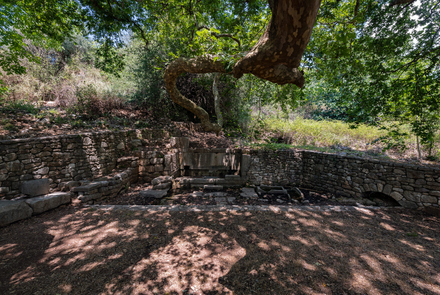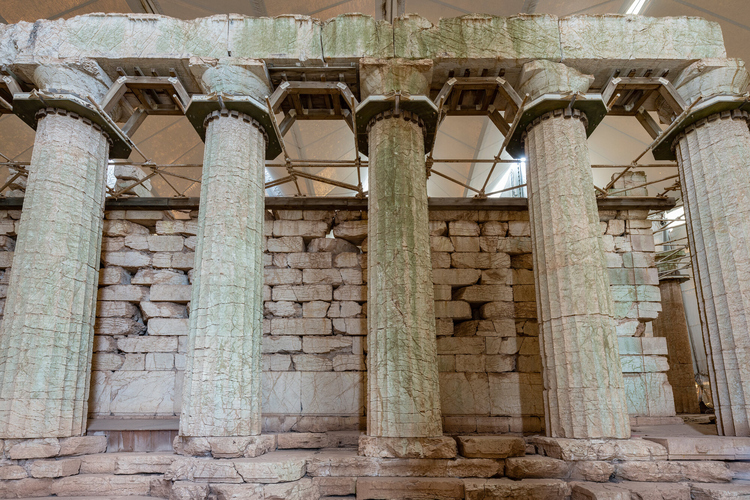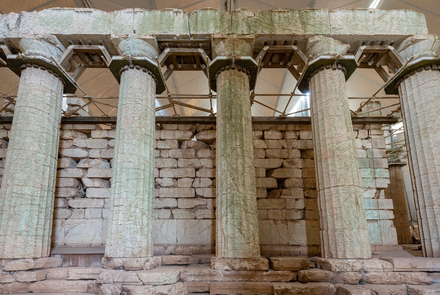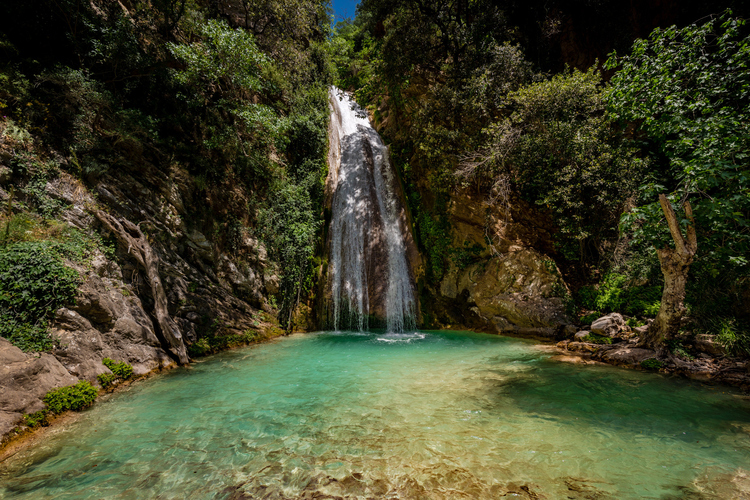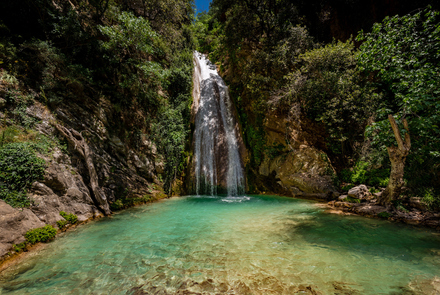In the village of Pavlitsa (Ano Phigaleia), at the summit of the Neda gorge, on the right side of the river that owes its name to one of the nymphs who took care of Zeus when he was born, the ruins of the ancient city of Phigaleia are preserved. Today the gorge of Neda is the physical and administrative border of Ilia and Messenia.
However, in ancient times, Phigaleia was, according to some scholars, a city of Triphylia, but most consider it as an Arcadian city. The territory of Phigaleia, in the northeast, included the sanctuary of the Bassae on Mount Kotylion where the temple of Apollo Epikourios, a dedication of the city's inhabitants, is preserved, as well as the sanctuary of Demeter Melaina on Mount Elaion in the southwest. The ancient city was fortified with a strong wall about 4 km long, with rectangular and circular towers, which is preserved even today in very good condition and at a sufficient height.
Pausanias mentions in Phigaleia the existence of sanctuaries of Artemis Soteira (:Savior), Dionysos Akratophoros and Eurynome, as well as a gymnasium and market with statues of Hermes and the Olympic victor Arrachion. A statue of a Kouros, which was found in the area of the ancient market of the city, is currently on display in the Museum of the Ancient Olympic Games in Olympia and is believed to depict the Olympic victor Arrachion. Pausanias also mentions the existence of the polyandrion of the Oresthasians, who helped the Phigaleians to drive out the Spartan conquerors (after 659 BC) and after they succeeded, they dedicated - built in honor of the god the archaic Temple of Apollo Epikourios because they believed that he was the one who helped them (epikourios = helper) to achieve their victory.
Scholars believe that there existed also a cult of Hygieia, Asclepius, Aphrodite and Neda or Tyche. The temple of Athena and Zeus Soter on the "Kourdoubouli" hill at the SW end of the market of the ancient city is the most remarkable excavated monument of ancient Phigaleia. It is a rectangular temple with a pronaos and a cella (sekos) oriented E-W. It is made of large rectangular ashlars according to the irregular isodome system and is preserved to a maximum height of three blocks. Its life-span period extends from the 4th century BC until the Roman era, while it must also have had an archaic phase. To its north, the remains of a Middle Helladic and Late Helladic settlement were discovered, while in the Byzantine era or shortly after, the temple seems to have been converted into a house.
A fountain from the early Hellenistic era has been excavated from the ancient city, from which drinking water still gushes today, as well as a cemetery with monumental tombs to the west of the ancient market that shows similarities with those of ancient Alipheira and Messene.
Copyediting: Ephorate of Antiquities of Ilia
- P.C. 27061, Phigalia of Ilia
- efahle@culture.gr
- 26260 22275 - 2624023753 (Ephorate of Antiquities of Ilia)
- Police Department of Elis - P.D. of Zacharo, Ephorate of Antiquities of Ilia
Winter : 8:00 a.m.- 3:30 p.m.
Summer : 08:00 a.m. - 8:00 p.m.
After communication with the security personnel


















